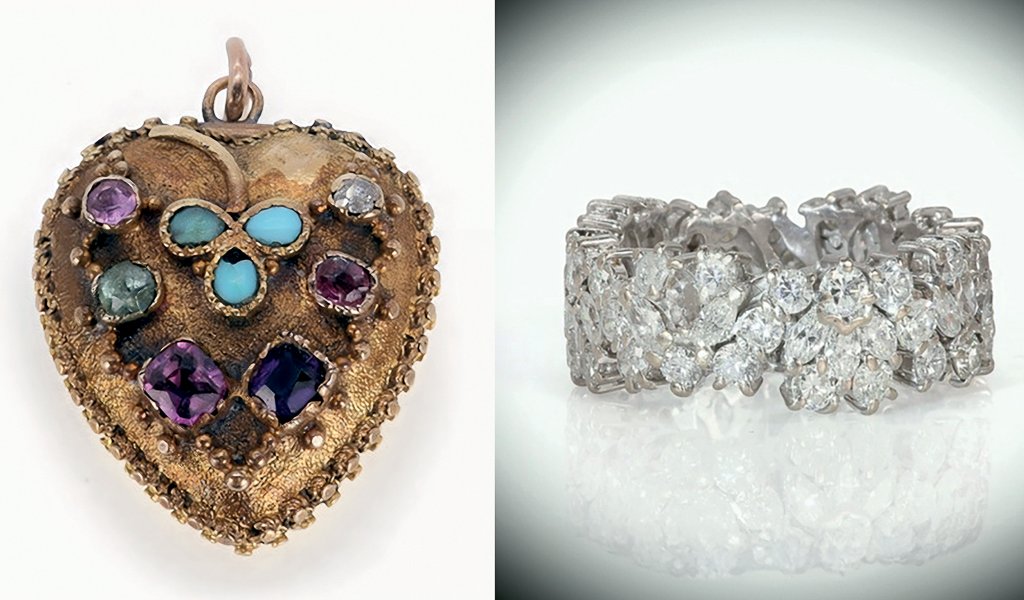Vivienne looks at ‘REGARD’ brooches, the invention of the eternity ring – and the astonishing rise in the value of gold.
IN the Victorian and Edwardian era, acrostic jewellery was very popular; acrostic meaning a motto or verse in which the first letters of each word are spelt out symbolically.
One type of coded memento are known as ‘REGARD’ brooches. These are pieces usually set with a (R)uby, an (E)merald, a (G)arnet, an (A)methyst, another (R)uby and a (D)iamond – the initial letters of which spell out the word. These pieces were very popular during the 19th Century and sell well in auctions today.
Other versions have the message disguised by scattering the stones instead of lining them up, for example (D)iamond, (E)merald, (A)methyst, (R)uby, (E)merald, (S)apphire, and (T)opaz – to spell out DEAREST.
Mottos on gold and silver jewellery include MIZPAH, which signifies an emotional bond between people who are separated either physically or by death and it means “The Lord watch between me and thee when we are absent from one another”. An average price for a MIZPAH brooch is in the region of £100-200 in today’s market.
Another type of meaningful jewellery is the eternity ring. The concept of a diamond eternity ring was created in the 1960s by diamond merchant De Beers. American investigative journalist Edward Jay Epstein stated that at the time the company had a secret agreement with the Soviet Union which, in return for the creation of a “single channel” controlling the world’s supply of diamonds, required the purchase of 90-95 per cent of the uncut gem diamonds produced by Russia.
The prevailing fashion at the time, particularly for engagement rings, was for them to be set with a single, large diamond. The Soviet gems were, however, small, often less than 0.25 carats. To avoid stockpiling, De Beers embarked on a promotion campaign of jewellery containing a number of small diamonds, culminating in the eternity ring, which was aimed at married women. One campaign slogan aimed at husbands was: “She married you for richer or poorer. Let her know how it’s going.” Yes, really!
Eternity rings or half eternity rings are also known as infinity rings, comprising a band of precious metal (usually gold) set with a continuous line of identically cut gemstones (usually diamonds) to symbolise never-ending love. Nowadays, this type of diamond ring is generally given to women as a gift on a special occasion or anniversary.
While the popularity of eternity rings continues, the origin can be traced back to the ancient Egyptians, who used them as symbols of eternal love. Some original designs also feature a snake, eating its own tail as a symbol of the circle of life – perhaps a bit weird in today’s society!
Editor’s Note: Perhaps you also have jewellery, antiques and collectables that might be valuable? If so, it is worth getting the advice of an Independent Antiques Valuer to assess your items. For further information, please contact Vivienne on 01629 640210 or 07870 238788; alternatively, to go www.viviennemilburn.co.uk or email vivienne@viviennemilburn.co.uk






